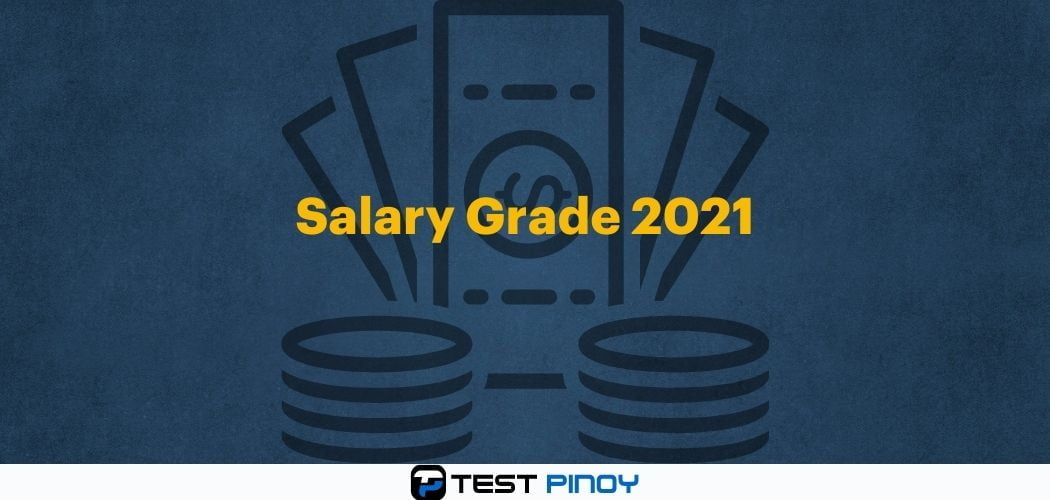In preparing your research paper, you will need to write the conceptual framework of your study. The conceptual framework steers the whole research activity.
It serves as a “map” or “rudder” that will guide you toward realizing your research objective or intent.
So, how do you prepare one? After reading this article, you’ll understand better what a conceptual framework is. You’ll also see a couple of examples and templates that you can use as a guide for your own research.
What is a conceptual framework?
A conceptual framework represents the researcher’s synthesis of the literature on how to explain a phenomenon. It maps out the actions required in the course of the study, given his previous knowledge of other researchers’ points of view and his observations on the subject of research.
In other words, the conceptual framework is the researcher’s understanding of how the particular variables in his study connect. Thus, it identifies the variables required in the research investigation. It is the researcher’s “map” in pursuing the investigation.
Understand that in explaining complex relationships, the easiest, simplest, and most effective way of delivering them is through a “conceptual framework.”
Note though that conceptual frameworks do not always have to be in the scientific literature. Even the average person can create their own. However, truly scientific and authoritative ones are typically found in scientific literature.
Moreover, researchers do not just create conceptual frameworks out of nowhere. They conduct comprehensive reviews of literature that support their conceptual framework, which makes their conceptual frameworks even more credible.
Why would you need one?
Imagine your study as a long journey with the research result as the destination. You don’t want to get lost in your journey because of the complicated concepts involved. This is why you need to have a guide. The conceptual framework keeps you on track by presenting and simplifying the relationship between the variables
Also, people who will read your research must have a clear guide to the variables in your study and where the research is heading. Just by looking at the conceptual framework, the readers can get the gist of the research concepts without reading the entire study.

Conceptual framework vs theoretical framework
While both of them show the concepts and ideas of your study, the conceptual framework lies within a much broader framework theoretical framework.
The theoretical framework draws support from time-tested theories that embody many researchers’ findings on why and how a particular phenomenon occurs. presents the theories, rules, and principles that serve as the basis of the research.
On the other hand, the conceptual framework shows a specific approach derived from the theoretical framework. It provides specific variables and shows how these variables are related.
Let’s say your research is about the Effects of Social Media on the Political Literacy of College Students. You may include in your theoretical framework some theories related to political literacy, political participation, and awareness.
For the conceptual framework, you may state that the specific form of political participation and awareness you will use for the study is the engagement of college students on political issues on social media. Then, through a diagram and narrative explanation, you can show that using social media affects the political literacy of college students.
Different types of conceptual frameworks
The conceptual framework has different types based on how the research concepts are organized.
Taxonomy
In this type of conceptual framework, the phenomena of your study are grouped together into categories without presenting the relationship among them. The point of this type of conceptual framework is to distinguish the categories from one another.
Visual Presentation
In this type of conceptual framework, the relationship between the phenomena and variables of your study is presented. Using this conceptual framework implies that your study provides empirical evidence to prove the relationship between variables.
This is the type of conceptual framework that is usually used in research studies.
Mathematical Description
In this type of conceptual framework, the relationship between phenomena and variables of your study is described using mathematical formulas. Also, the extent of the relationship between these variables is presented in specific quantities.
How to make a conceptual framework
Before you prepare your conceptual framework, you need to do the following things:
Choose your topic
Decide on what will be your research topic. The topic should be within your field of specialization.
As a researcher, there are many aspects of the world you can choose to investigate. However, the critical thing to consider is that not all the world’s resources are available to us.
Moreover, the research may also be time-bound. As such, one should choose a topic that they consider to be comprehensively achieved within the resources they have and within the allotted time.
Make your research question
Unlike the topic, which can be a broad area of study, the research question must be specific. The exact aspects of who, what, where, how, and why have to be clearly laid out. This is where one of the most important aspects of your conceptual framework will come in.
The research question is a clear and arguable question which is where your research will revolve. Your research question should be one that you are truly curious about to have a concise conceptual framework.
The research question is an essential part of your conceptual framework and your overall research, which puts the focus and path of your study. It avoids the chance of getting lost as you write the paper.
Do a literature review
Review relevant and updated research on the theme that you decide to work on after scrutiny of the issue at hand. Preferably use peer-reviewed, and well-known scientific journals as these are reliable sources of information.
The purpose of having a literature review is to let you and your readers know about the existing ideas and information on your chosen topic; and the weak and strong points of it.
Some of the key things you should remember when doing the review of literature are that it should be: connected to the topic; synthesize the results of the publications you have read; and recognize the areas where there is a lack of information or insufficient evidence to prove the claim.
Having a review of the literature narrows down what you will be putting in your conceptual framework.
Identify the important variables of your study and their relationship
There are two important variables that you must identify in your study: the independent and the dependent variables.
An independent variable is a variable that you can manipulate. It can affect the dependent variable. Meanwhile, the dependent variable is the resulting variable that you are measuring.
You may refer to your research question to determine your research’s independent and dependent variables.
Suppose that your research question is: “Is There a Significant Relationship Between the Quantity of Organic Fertilizer Used and the Growth Rate of the Plant?” The independent variable of this study is the quantity of organic fertilizer used while the dependent variable is the growth rate of the plant.
Usually, the variables of a study have a direct relationship. If a change in one of your variables leads to a corresponding change in another variable, then they might have this kind of relationship.
However, note that having a direct relationship between variables does not mean that they already have a cause-and-effect relationship. It takes statistical analysis to prove causation between variables.
Using our example earlier, the quantity of organic fertilizer may have a direct relationship to the growth rate of the plant. However, we are not yet certain that the quantity of organic fertilizer is the sole reason for the changes in the growth rate of the plant.
Generate the conceptual framework
Build your conceptual framework using your mix of the variables from the scientific articles you have read. Your problem statement or research objective serves as a reference for constructing it. In effect, your study will attempt to answer the question that other researchers have not explained yet. Your research should address a knowledge gap.
Conceptual Framework in quantitative research
You can create your conceptual framework by following the same steps discussed in the previous section. Note, however, that quantitative research has statistical analysis. Thus, you may now use arrows to indicate a cause-and-effect relationship in your model. An arrow implies that your independent variable caused the changes in your dependent variable.
Usually, for quantitative research, the Input-Process-Output model is used as a visual diagram. Here is an example of a conceptual framework in quantitative research:
Research Topic: Level of Effectiveness of Corn (Zea mays) Silk Ethanol Extract as an Antioxidant
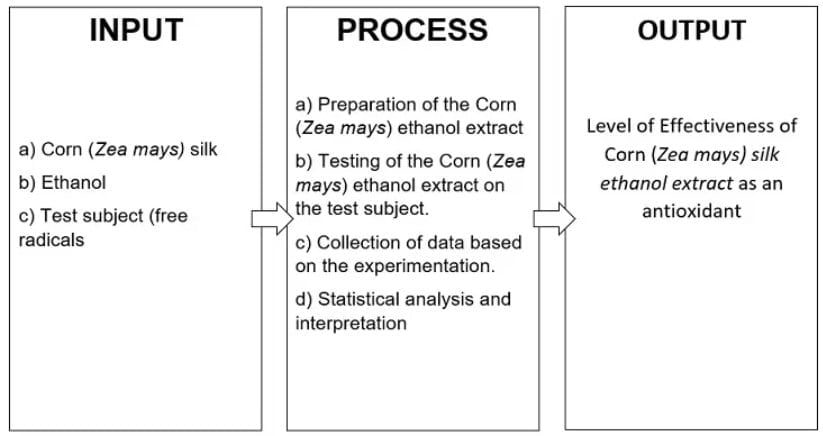
Conceptual Framework in qualitative research
Again, you can follow the same step-by-step guide discussed previously to create a conceptual framework for qualitative research. However, take note that you should avoid using one-way arrows as they may indicate causation. Qualitative research is not able to prove causation since it uses only descriptive and narrative analysis to relate variables.
Here is an example of a conceptual framework in qualitative research:
Research Topic: Lived Experiences of Medical Health Workers During Community Quarantine
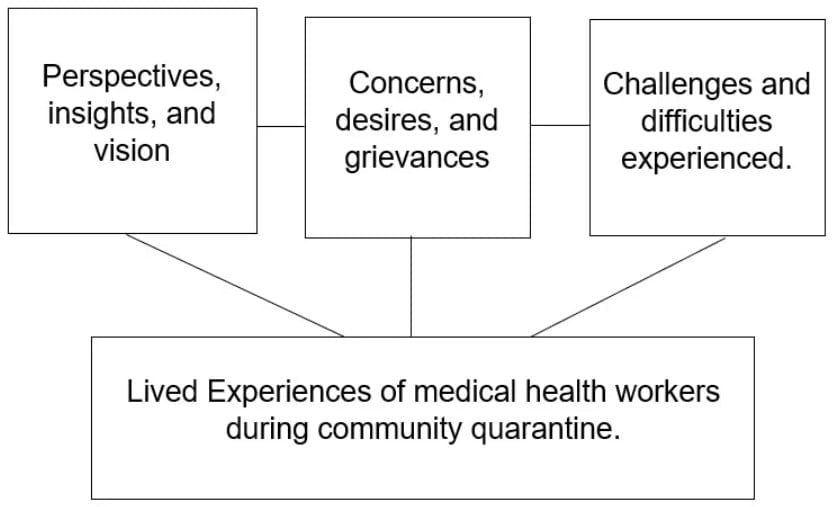
Conceptual Framework samples
Conceptual Framework Sample 1 with Research Topic: Hypoglycemic Ability of Gabi (Colocasia esculenta) Leaf Extract in the Blood Glucose Level of Swiss Mice (Mus musculus)

Sample 1: The quantity of gabi leaf extract is the independent variable while the blood glucose level of the Swiss mice is the dependent variable of the study. Through the empirical evidence and statistical analysis presented in this study, a direct relationship between these variables is established.
Conceptual Framework Sample 2 with Research Topic: Level of Effectiveness of Using Social Media in the Political Literacy of College Students
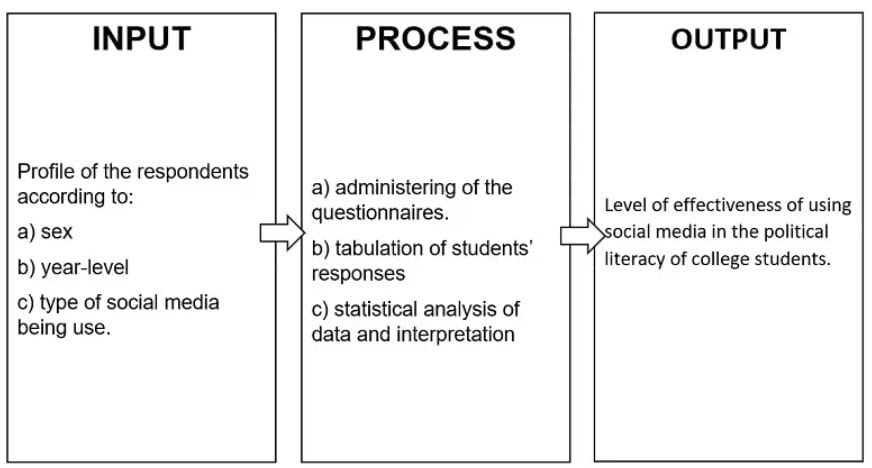
Sample 2: The input is the profile of the college students according to sex, year level, and the social media platform being used. The research process includes administering the questionnaires, tabulation of students’ responses, and statistical analysis of the data and interpretation. The output is the level of effectiveness of using social media in the political literacy of college students.
Conceptual Framework Sample 3 with Research Topic: Factors Affecting the Satisfaction Level of Community Inhabitants
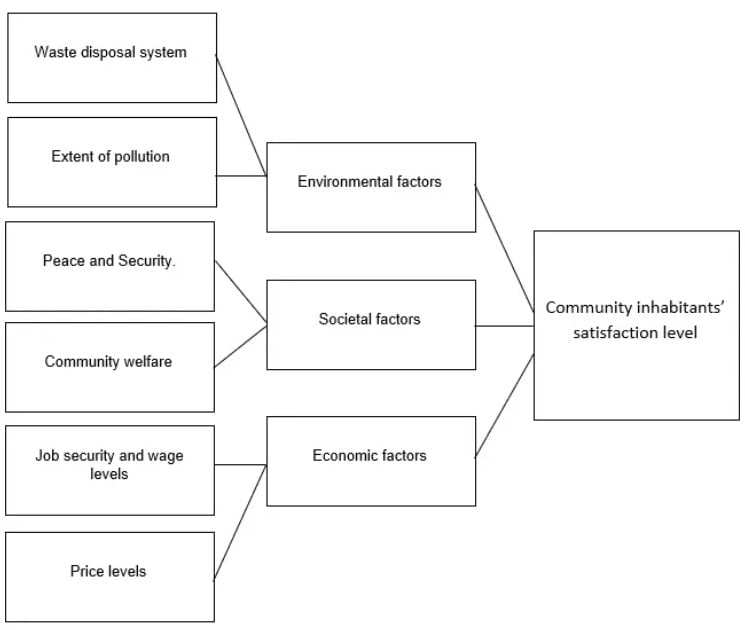
Sample 3: Presents a visual illustration of the factors that affect the satisfaction level of community inhabitants. As presented, environmental factors, societal factors, and economic factors influence the satisfaction level of community inhabitants. Each factor has its indicators which are considered by this study.
Non-academic conceptual framework example
Background: Peter is a co-owner of a fine-dining restaurant here in the Philippines.
1. Choose your topic
Peter is interested to know what affects the satisfaction of their customers. The goal is to know what specific parts of the business can influence the customers’ experience.
2. Make your research question
The research question the researcher can formulate is “What are the factors that can affect customer satisfaction with dining in Peter’s restaurant?”
3. Conduct a review of the literature
Read up on different publications related to food establishments, specifically fine dining, menu, and customer satisfaction.
From here, the researcher already has an idea of the variables he can pinpoint from those publications that have been proven to affect customer satisfaction.
4. Choose your variables
With all the books, scholarly articles, and research being done, it can be determined that there are three main variables: food taste, speed of service, and staff performance.
Customers are very much concerned with the taste of the product. The amount of time it takes to serve them also affects how pleased or displeased they are. Lastly, the performance of the staff that serves also affects their experience.
5. Choose your relationships
In this example, there are three variables: food taste, speed of service, and staff performance are determining factors of customer satisfaction.
6. Create the conceptual framework
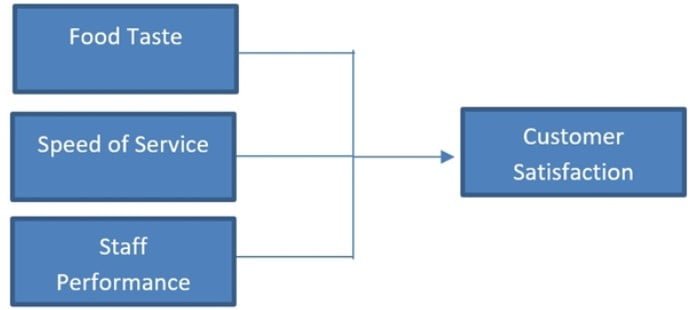
Tips and warnings
- Keep it simple. Avoid using fancy illustrations or designs when creating your conceptual framework.
- Allot a space for feedback. This is to show that your research variables or methodology might be revised based on the feedback of the research panel. Shown below is an example of a conceptual framework with a spot allotted for feedback.
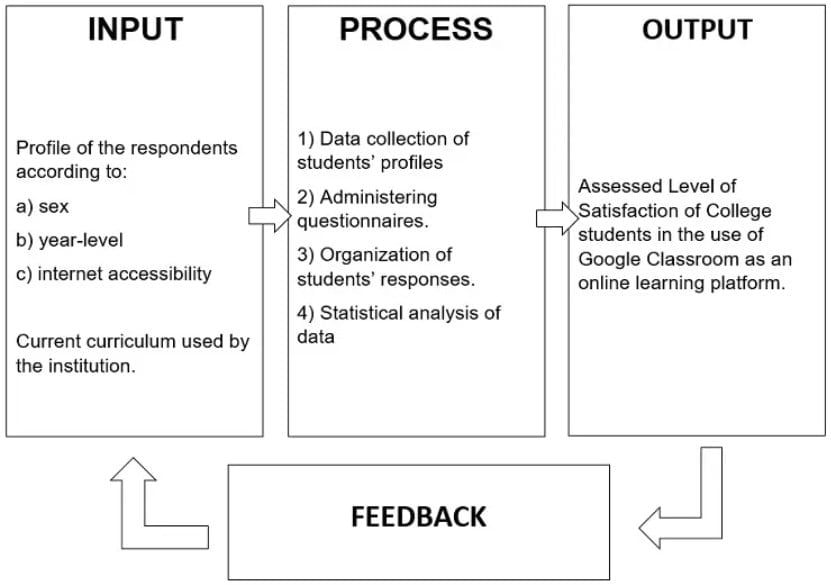
Conceptual Framework templates
FAQs
How to explain my conceptual framework in defense?
If you have used the Independent-Dependent Variable Model in creating your conceptual framework, start by telling what your research’s variables are. Afterward, explain the relationship between these variables. Example:
“Using statistical/descriptive analysis of the data we have collected, we are going to show how the <state your independent variable> exhibits a significant relationship to <state your dependent variable>.”
On the other hand, if you have used an Input-Process-Output Model, start by explaining the inputs of your research. Then, tell them about your research process. You may refer to the Research Methodology in Chapter 3 to accurately present the process of your research. Lastly, explain what your research outcome is.
Meanwhile, if you have used a concept map, make sure that you understand the idea behind the illustration. Discuss how the concepts are related to each other and highlight the research outcome.
In what stage of research is the conceptual framework written?
The conceptual framework is in Chapter 2 of the research study following the Review of Related Literature.
Conceptual Framework vs Literature Review
The Conceptual Framework is a summary of the concepts of your study where the relationship of the variables is presented. On the other hand, Literature Review is a collection of published studies and literature that are related to your study.
Suppose that your research is about the Hypoglycemic Ability of Gabi (Colocasia esculenta) Leaf Extract on Swiss Mice (Mus musculus). In your conceptual framework, you will create a visual diagram and a narrative explanation presenting the quantity of gabi leaf extract and the mice’s blood glucose level as your research variables.
On the other hand, for the literature review, you may a study about Taro (Colocasia esculenta) and explain how this is related to your research topic.
When do I use a two-way arrow for my conceptual framework?
You’re going to use a two-way arrow in your conceptual framework if the variables of your study are interdependent on each other. If variable A affects variable B and variable B also affects variable A, then you may use a two-way arrow to show that A and B affect each other.
Suppose that your research is about the Relationship Between Students’ Satisfaction Levels and Online Learning platforms. Since students’ satisfaction level determines the online learning platform used by the school and vice versa, then these variables have a direct relationship. Thus, you may use two-way arrows to indicate that the variables directly affect each other.



